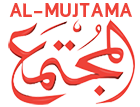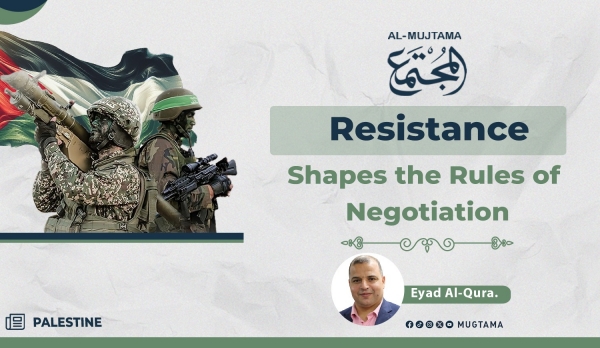Resistance Weapon... A Power Equation at the heart of Negotiation
Since the beginning of the war on Gaza, the resistance's weapon has become a central element in the military battle. At the same time, it has also become a decisive factor in the negotiation battle, not as a bargaining chip, but as a guarantee for survival, strategic depth, and a red line that protects national achievements and prevents the resistance from sliding into pathways of settlement or attrition.
This analysis addresses the dimensions of this weapon, from its position at the negotiating table to its field function, and its place in the collective Palestinian perception, alongside future scenarios for engaging with it.
First: Weapons are off the negotiation table.
The central message conveyed by the resistance to all mediators is: Our weapon is not up for discussion, neither in a ceasefire, nor in a deal, nor in a temporary civilian administration.
The weapon in Gaza is not a political file, but rather an existential one. The Palestinians’ extended experience since the Nakba of 1948, through Oslo, and up to the siege, has confirmed that what is taken by force can only be restored by force, and that those who surrender their weapons lose the ability to protect their people.
Therefore, there was a complete rejection of any attempt to link the ceasefire, the introduction of aid, or reconstruction to the condition of disarmament or its freeze, as this would be an attempt to dismantle the most important equation imposed by the resistance: "No security for the enemy without rights for our people.
Secondly: The resistance negotiates from a position of equality.
The ground force demonstrated by the resistance during the war, along with its organizational and combat flexibility, has made it an unstoppable player. The Palestinian negotiator is no longer negotiating from a position of weakness or begging, but rather from a position of possessing deterrent capabilities, controlling the field, and disrupting the enemy's calculations at every moment. The latest war has produced a new balance that confirms there can be no negotiations without fire, and no settlements without a cost to the occupation. Here, the weapon has shifted from being a tool of combat to a strategic negotiating lever.
Thirdly: The Depth of Real Deterrence:
What the resistance has established over the past months is that qualitative strikes are still possible, despite the exhaustion and wounds. The bombardment has not destroyed the military structure, nor dismantled the command-and-control system. The tunnels are still operational, rockets are being launched deep into enemy territory, and the field moves with precise rhythm. This has forced the occupation to reconsider before any ground invasion, even leading to a retreat from plans to declare "decisive action" because the cost would be unbearable.
Fourth: Political maneuvering under the cover of fire.
Hamas and resistance factions did not reject political initiatives, but they did not enter any negotiations without a field cover. This flexibility does not mean concession; rather, it is about utilizing the political moment in favor of national goals and achieving civil gains without the price being the encroachment on arms. The political intelligence of the resistance is reflected in keeping the fire burning in the background while working on negotiation lines with patience and caution.
Fifth: Disarmament... A dead project that is renewed.
Since after the war in 2014, some forces have not stopped proposing scenarios of "disarmament in exchange for reconstruction.
But these proposals failed in the first popular test; because the Palestinian society, especially in Gaza, realizes that dignity cannot be regained through neutrality, and that the occupation does not show mercy to the weaker party. Experiences have proven that those who surrendered their weapons became hostages to security and financial dictates, and outside the decision-making circle
Sixth: Temporary de-escalation... Tactical pause:
If a ceasefire agreement is reached, it will be seen by the resistance as a pause for repositioning, not an end to the confrontation. The resistance efforts will not stop; rather, they may witness a phase of fortification, preparation, technological development, and military evaluation. A ceasefire that does not include a complete withdrawal, lifting of the siege, and ensuring the flow of aid without coercion will not be granted any internal legitimacy.
Seventh: Reconstruction extortion... in exchange for disarmament:
The resistance understands that reconstruction is a purely humanitarian issue, but it refuses to be used as a tool for pressure or bargaining.
The Palestinian people deserve a dignified life without being asked to disarm or give up the option of resistance. The idea of "reconstruction in exchange for calm" may be discussed, but "reconstruction in exchange for disarmament" is a proposal that is politically and morally invalid.
Eighth: Scenarios for the upcoming phase:
The resistance today faces several scenarios in light of the escalation and ongoing negotiations:
- The success of a swap deal leads to a temporary ceasefire, without affecting the military structure.
- A new "Israeli" evasion in implementing the second phase leads to a new field explosion.
- International initiatives have been proposed to impose security and humanitarian arrangements that include monitoring crossings, and possibly UN oversight, through which an attempt is being made to indirectly integrate the weapons file.
The third scenario is the most dangerous, as it targets the resistance with soft mechanisms rather than direct force, and it requires strategic and field awareness to deal with it.
Ninth: The regional dimension of the resistance weapon:
The weaponry of Gaza is no longer just a domestic Palestinian issue; it has become part of the regional deterrence equation.
What happened in the battle of "Al-Aqsa Flood" has disrupted Israel's calculations not only within Palestine but also on its northern and eastern borders, and even at the level of the Gulf. Thus, talking about dismantling this weapon practically means dismantling the only unofficial regional power that has confused both Israel and the United States.
Tenth: The weapon in the balance of the Palestinian interior:
Weapons represent a cornerstone of political balance internally. In light of the weakness of the traditional national project and the absence of practical alternatives, the resistance's weaponry carries popular and moral legitimacy, especially in Gaza. It symbolizes dignity and sovereignty, preventing internal explosions and thwarting projects aimed at replacing the resistance with a hybrid body subject to funding or security coordination.
Eleventh: The upcoming battle... Weapons as the primary targets:
Any upcoming aggression will begin with an attempt to strike the resistance's infrastructure. "Israel" acknowledges that Gaza's weaponry is a knot in its national security.
However, experience has shown that the resistance now possesses a very complex system of concealment, management, and development, making it impossible to eliminate it with a single strike or even a large-scale campaign.
In summary: The resistance's weapon is not a tactical file that can be dismantled through a political round, but it is today the essence of the equation, the nerve of deterrence, and a symbol of national identity. All attempts to dismantle this weapon, neutralize it, or circumvent it will fail as previous attempts have failed; because the Palestinian people no longer bet on the international community or on fragile settlements, but rely on what they possess in terms of willpower, and brigades that fight and negotiate from behind the guns, not from behind concessions.
This weapon is not just a tool; it is the first condition for any upcoming equation, the maker of balance, and a guarantee that the occupation will not return to Gaza as it entered before 2005.


